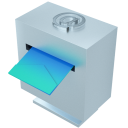直接使用Python来实现向量的相加
# -*-coding:utf-8-*-#向量相加def pythonsum(n): a = range(n) b = range(n) c = [] for i in range(len(a)): a[i] = i**2 b[i] = i**3 c.append(a[i]+b[i]) return a,b,cprint pythonsum(4),type(pythonsum(4))for arg in pythonsum(4): print arg从这里这个输出结果可以看得出来,return多个值时,是以列表的形式返回的
([0, 1, 4, 9], [0, 1, 8, 27], [0, 2, 12, 36]) <type 'tuple'>[0, 1, 4, 9][0, 1, 8, 27][0, 2, 12, 36]使用numpy包实现两个向量的相加
def numpysum(n): a = np.arange(n) ** 2 b = np.arange(n) ** 3 c = a + b return a,b,c(array([0, 1, 4, 9]), array([ 0, 1, 8, 27]), array([ 0, 2, 12, 36])) <type 'function'>[0 1 4 9][ 0 1 8 27][ 0 2 12 36]比较用Python实现两个向量相加和用numpy实现两个向量相加的情况
size = 1000start = datetime.now()c = pythonsum(size)delta = datetime.now() - start# print 'The last 2 elements of the sum',c[-2:]print 'pythonSum elapsed time in microseconds',delta.microsecondssize = 1000start1 = datetime.now()c1 = numpysum(size)delta1 = datetime.now() - start1# print 'The last 2 elements of the sum',c1[-2:]print 'numpySum elapsed time in microseconds',delta1.microseconds从下面程序运行结果我们可以看到在处理向量是numpy要比Python计算高出不知道多少倍
pythonSum elapsed time in microseconds 1000numpySum elapsed time in microseconds 0以上这篇关于Python中的向量相加和numpy中的向量相加效率对比就是小编分享给大家的全部内容了,希望能给大家一个参考,也希望大家多多支持。








































 热门文章
热门文章





